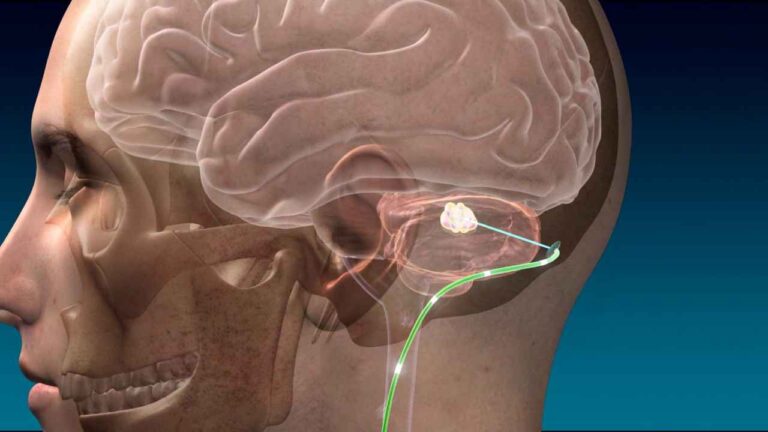Now, 10-year-old Isla Edwards underwent a routine eye test at school for little fuzzy vision, and she didn’t know that it would ultimately lead to the diagnosis of a fatal brain disease associated with dementia.
In March 2021, at age 7, Isla’s vision problems during the eye test prompted suggestions that she might need glasses. However, her mother, Jacquelyn Stockdale, soon realized the situation was far graver than mere vision issues. Isla, otherwise a healthy child, diagnosed with a genetic condition known as Batten disease. This rare ailment manifests as childhood dementia, delayed development, seizures, blindness, and premature death.
“At that time, there were no apparent signs of anything being amiss with Isla. Her vision was slightly fuzzy at long distances, but this was not uncommon for a child on the verge of needing glasses,”
Stockdale, Isla Edwards’ family
After her eye examination, it was strongly recommended that Isla consult with a pediatric ophthalmologist immediately. The results were alarming, prompting Stockdale to make a 90-minute drive to Texas Children’s Hospital in Houston on the same day. There, the doctors confirmed Isla’s early signs of pediatric macular degeneration and advised a genetic test to identify the underlying cause.
“On August 12, I was informed that Isla’s genetic panel had returned positive for diagnosing neuronal ceroid lipofuscinoses. This disease, also known as CLN3 juvenile Batten disease, is an exceedingly rare and devastating condition with no known treatment or cure,” Stockdale disclosed.
“I was told that Isla would soon lose her vision completely, develop childhood dementia and epilepsy, experience declining mental cognition, and see her physical abilities deteriorate. The life expectancy for a child with CLN3 ranged from late teens to early twenties,” Stockdale added.
Over the two years since Isla’s diagnosis, the Stockdale family has not given up hope. Despite losing 90 percent of her vision, Isla has embarked on learning Braille. Her family views her vision impairment as a strength rather than a weakness.

“We are immensely proud of Isla’s progress to date. She has lost a significant portion of her vision since 2021, with only about 10 percent remaining. Nonetheless, she continues to enjoy activities such as swimming, dancing, and video games, adapting to her current visual capabilities,” Stockdale affirmed.
“We don’t see Isla’s vision loss as a tragic circumstance or a flaw. It’s crucial for us that she understands her visual impairment doesn’t diminish her worth. If anything, it makes her stronger and more extraordinary, and we couldn’t be prouder of who she is.
“Vision impairment is her only symptom of this disease, and we are doing everything in our power to keep it that way. On the day of her diagnosis, we were told she was at her healthiest, and two years later, she continues to defy that prognosis,”
Stockdale added
The Stockdale family believes that Isla’s remarkable progress is attributable to a medication called Miglustat, which she began taking in November 2022.
Miglustat is part of a clinical trial approved by the Food and Drug Administration (FDA) for Gaucher’s disease. Fearing that Isla might receive a placebo in the trial, Stockdale chose to cover the cost of the medication herself.

“The clinical trial initially aimed to evaluate Miglustat’s effectiveness in treating CLN3 Batten disease as well,” Stockdale explained. “We decided to share Isla’s story on social media when it became evident that we couldn’t afford her necessary treatment without assistance. Our community rallied together, raising funds to cover the $18,000 monthly cost of the medication.
“Since starting this medication, Isla’s eye deterioration has ceased, indicating that the treatment effectively halts the disease’s progression. This potentially means that Isla could become the first child to live a full life without childhood dementia, ataxia, physical and mental disabilities, and epilepsy,” Stockdale noted.
“While we still have a long road ahead, all her doctors are amazed by her progress. We are filled with pride and hope for her future.”
Stockdale acknowledged that facing a diagnosis as rare as Batten disease can be isolating. To raise awareness and connect with other families affected by the condition, she established a Facebook page called ‘Isla’s Faith: Isla Edwards’ Fight Against CLN3 Batten Disease.’
“Having the support and shared resources of other families is invaluable, and something we are so grateful for,” Stockdale added.
“We firmly believe that Isla will be among the first children to change the history of this disease. She has broken every single barrier and defied every expectation since day one, and we believe she will continue to do so until a cure for CLN3 Batten disease becomes a reality.”
What Is Batten Disease?
Batten disease is a group of fatal genetic disorders that impair the body’s ability to eliminate cellular waste. Consequently, lipids and proteins accumulate within the body’s cells.
The disease can lead to various symptoms, including vision loss, seizures, dementia, cognitive impairment, speech problems, and lack of coordination. Later stages of the disease can bring tremors, mood changes, hallucinations, muscle spasticity, and heart issues. Batten disease is exceedingly rare, affecting approximately 3 in every 100,000 births in the United States. Tragically, it is a fatal condition, with individuals potentially surviving until their early twenties.
Also read:







